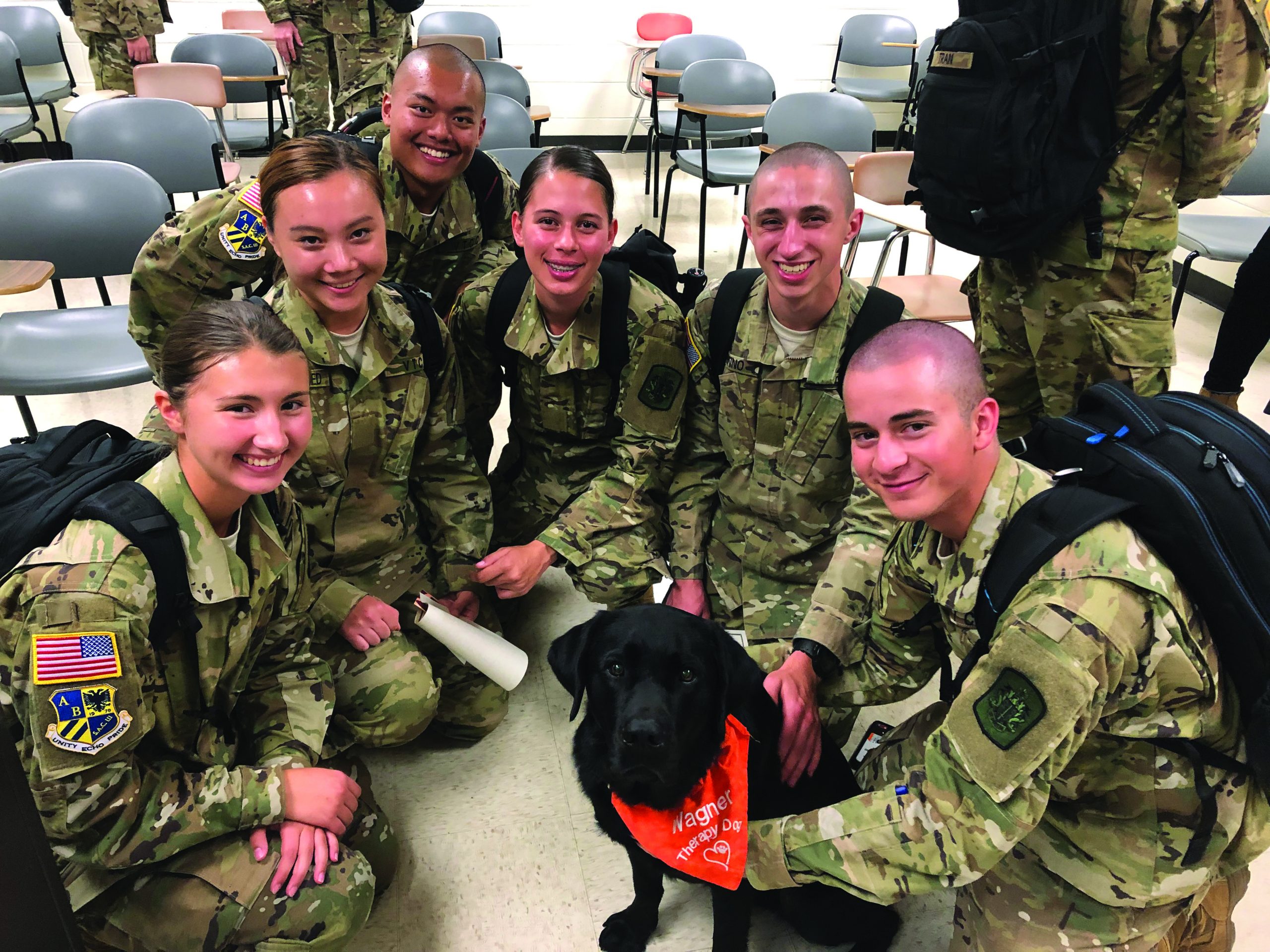by Dr. Dave Erlewein, DVM
Hilda is an 11-year-old chocolate Lab that always greets me with an obviously joyful series of Woofs. With nose high in the air, she always spins in a tight circle while expressing her affection. This visit, however, her vocalizing was raspy and harsh and following by heavy noisy panting.
“There’s the problem, Doc,” her chauffeur uttered. “It sounds like she has a sore throat, and it seems like she can’t catch her breath.”
Further questioning revealed that the symptoms had been slowly developing over the last month. First, there was a raspy sounding panting, then a hoarse bark, and now rapid tiring on her walks and some coughing and gagging when eating. I was pretty sure that Hilda was developing laryngeal paralysis, a condition relatively common in aging large breed dogs, especially Labrador and golden retrievers. To understand this disorder, we first need to discuss the larynx and some of its functions.
When we think about the larynx, we often think about the vocal chords, and the hoarseness or inability to speak when we have laryngitis. But one of the most important functions of the larynx is how it acts as the “gate keeper” of the air way, or trachea. When we need to take a deep breath, the larynx opens wide to allow us to fill our lungs. When we eat, the larynx closes off the airway so that food and liquids go down the esophagus and not the trachea.
When laryngeal paralysis develops, the muscles of the larynx do not work properly and are incapable of expanding the opening of the larynx to allow a deep breath. The inability to take in a large volume of air results in more rapid breathing, anxiety, and further inability to take in adequate amounts of air. The laryngeal tissues flap in the airway and may obstruct the airway, creating a respiratory crisis and even death.
The development of laryngeal paralysis is not a rapid or sudden process but rather develops slowly over a considerable amount of time. Early signs include increased panting, increasingly noisy breathing, and reduced exercise tolerance. When the condition progresses to full-blown paralysis of the larynx there is usually a change in voice; gasping for breath and anxiety; respiratory distress with minimum exercise or excitement; and choking, coughing, or gagging when eating.
At this point in time we simply do not know what causes laryngeal paralysis. Some research has indicated a connection with an underactive thyroid, but treatment with thyroid hormones will not improve laryngeal paralysis. Other researchers feel that laryngeal paralysis is a part of a more widespread degeneration of nerve fibers, but this has not been proven. We do know that dogs with laryngeal paralysis are much more likely to develop an abnormality of the esophagus, which causes a bulging of the esophagus, regurgitation, and aspiration pneumonia.
While symptoms and a physical examination can create a strong suspicion of laryngeal paralysis, the only means of positive diagnosis is direct examination of the larynx during breathing. This requires sedation deep enough to allow the mouth to be opened and the tongue pulled forward to see the larynx, and yet light enough that the patient will take some deep breaths. If the larynx is normal, the opening and closing of the larynx is easily observed. With paralysis, the larynx does not open wide and the laryngeal tissues may close off the larynx when the patient inhales.
Other necessary tests include chest x-rays looking for signs of pneumonia, tumors, megaesophagus, and heart disease. Blood tests are done to rule out infections and an underactive thyroid gland.
Treatment of laryngeal paralysis involves surgical widening of the opening of the larynx. Various procedures have been used but all involve some risk and none of the procedures are uniformly effective. The primary post-surgical problem is aspiration pneumonia resulting from the larynx not closing tightly during swallowing. Aspiration pneumonia is the most common complication of laryngeal paralysis and while only eight to 15 percent of dogs have pneumonia prior to surgery, nearly a third will develop the condition at some point in time. Pneumonia is always a life-threatening illness and treatment is very difficult. A common procedure known as laryngeal tie-back can help prevent this problem. This iswhere a suture is placed to open one side of the larynx. Other procedures involve partial removal of the vocal chords or part of the cartilage responsible for closing and opening the larynx, but they have been less successful.
The decision to attempt surgical treatment of laryngeal paralysis is not an easy one to make. Regardless of the procedure employed, the incidence of complications is quite high. My advice is to consult a board certified veterinary surgeon to increase the chances of successful treatment. Laryngeal paralysis is a very serious illness, and treatment is difficult and not uniformly effective. Untreated, the condition often results in a respiratory crisis and sometimes death








